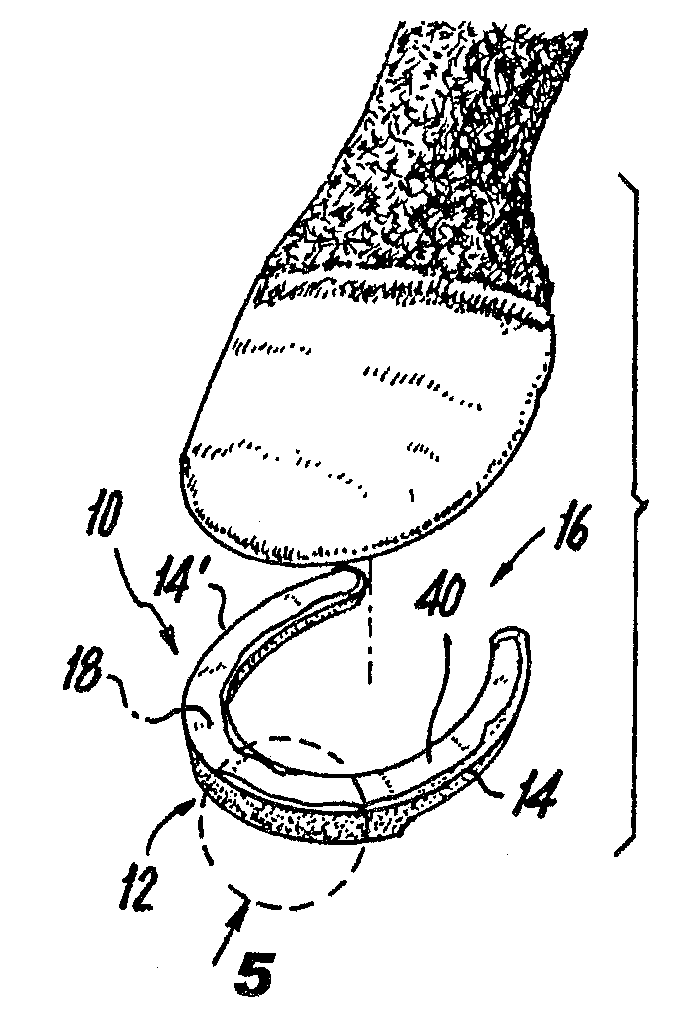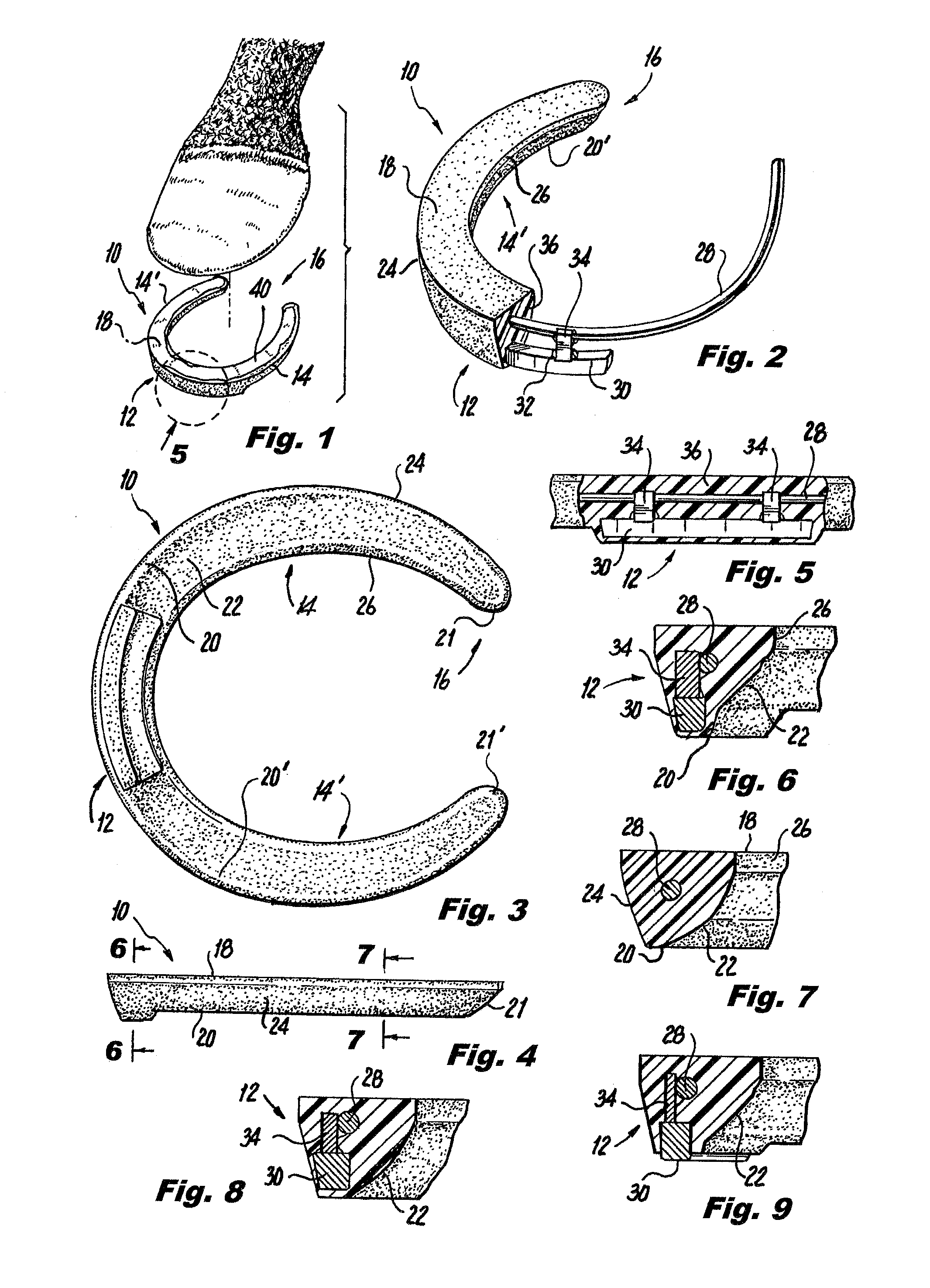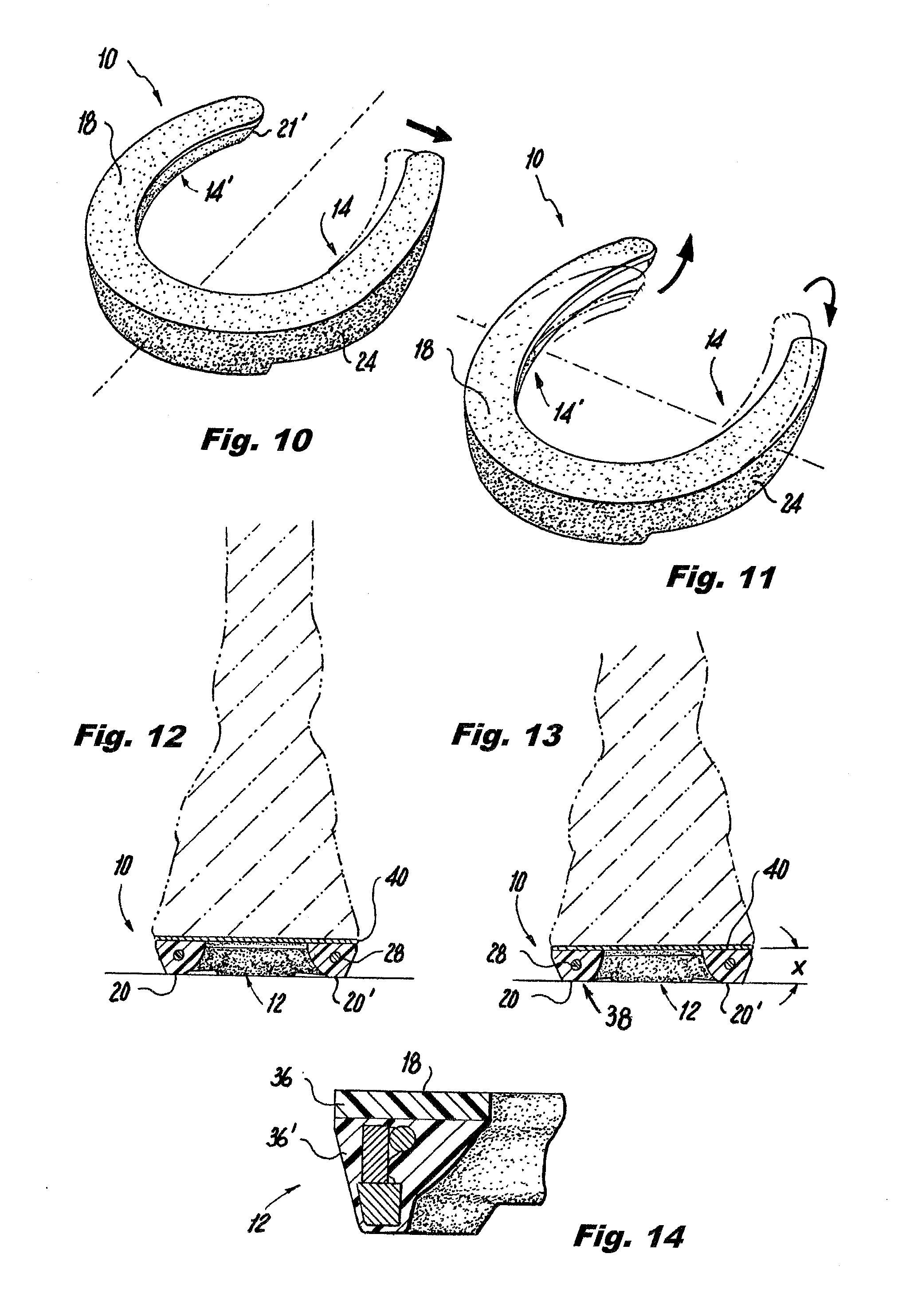This is true mainly due to the fact that they are constantly on the move, run on uneven ground, stand in water and otherwise are exposed to environmental factors which wear away the hoof in the manner in which nature intended.
Furthermore, special feeds which create other desirable conditions in domesticated horses may have a harmful effect on the feet.
As a result of the natural flexion and movement of the foot over time the nails work loose and the clinches become raised, which can often lead to a horse dislodging a shoe or shoes.
This event can result in damage to the hoof wall when the clinched nails are pulled through the wall of the hoof or more disastrous if the shoe is not pulled off cleanly the horse may step on exposed nail ends damaging the sole or frog or further damage a leg with the dislodged shoe.
Frequent removal and reattachment of shoes makes numerous nail holes in the hoof walls.
There is always a possibility of error when driving a nail, if driven too close to the
white line it can be very painful for a horse leading to lameness and possibly abscesses.
If there is insufficient new healthy horn growth two problems arise.
First, with numerous nail holes already in the hoof wall, it can be difficult or sometimes impossible to secure a new shoe.
Second, the abundance of nail holes lets in
bacteria, dries out the hoof wall, damages the corium (
vascular tissue that supplies nourishment to the hoof) and generally weakens the hoof structure, which can lead to failure of the wall and damage to the horse's hoof and foot.
The shock and vibration transmitted to a horse's
anatomy is intensified by
metal shoes and can directly affect a horse's efficiency, athletic performance and the amount of trauma that will be experienced.
Accordingly, it can be readily understood that the potential for injury is large whenever horses
train or race on hard surfaces.
It is known that the foot of an active unshod horse living in a
natural environment will wear such that the front and back of the hoof become gently rounded.
Unfortunately, many conventional horseshoes are so constructed as to require replacement by the time this more natural configuration is attained.
This configuration permits the hoof to better slide or plane over the
ground support surface during the braking phase as
impact takes place, thereby reducing the effective rate of loading and the shock and vibration experienced.
It follows that use of relatively rigid
metal or aluminum horseshoes substantially prevents this natural movement and so tends to reduce both the
effective size, and the shock and vibration absorbing capability of a horse's foot.
For that matter, it is believed that the occurrence of hoof cracks is sometimes caused by the flexing and widening action of the foot and hoof working against the nails associated with a substantially inflexible horseshoe.
Inflexible horseshoes also are known to prevent the natural wearing of the hoof, which can result in contraction and
inflammation of the foot.
Although some shock or vibration may be relieved through these alternatives, the rigidity of the metal shoe is still present as is the damaging effect of the nails.
Most, if not all, plastics-fabricated horseshoes currently on the market, however, suffer from the
disadvantage that they are time-consuming and awkward to apply, particularly those that have to be assembled from a kit of parts or require special equipment.
And while some inventions teach methods where a person without farrier skills can attach the hoof covering, equine hooves require particular preparation prior to shoe application such that unknowledgeable trimming or rasping and handling of some equipment can realize disastrous results.
For that matter, such unskilled farrier practice on most Thoroughbred horses, especially those in intensive training programs, can easily result in injury.
Gluing to a sidewall presents special problems, principally because bonds there can be subjected to very high tensile forces when a horse pivots, and bonds are usually weakest in tension.
In addition, for horses with thin hoof walls, such as many Thoroughbreds have, when gluing side extensions the
high heat (hoof adhesives heat up significantly when curing) can produce discomfort for the horse.
The hoof wall is almost encapsulated by these extensions and
adhesive, creating unnatural conditions which can be detrimental to the health of the horse's foot.
For that matter, it is
time consuming to fit such a shoe, wasteful of material, and requires a number of parts to be supplied for each shoe.
For the next shoeing, the tabs can prove extremely difficult to remove from the upper hoof wall, causing discomfort for the horse and extra time spent prepping the hoof for the fitting of new shoes.
As the vertical wall becomes more vertical it fails to provide adequate support.
These effects can propagate a cycle of
distortion and imbalance having the related effect of worsening the angular
deformity which caused the original problem.
Additionally, the region of the foot under the most load grows the slowest.
Such extensions, however, create a lever affect on the hoof wall and can create flares and hoof wall separation, as described above.
Morrison explains, however, that while such aluminum shoes are helpful with wide feet, directly gluing such a shoe on a
foal foot constricts the hoof to some degree and likely creates a mild
heel contracture.
Such techniques may be said to frequently realize an entirely contracted hoof (i.e., mule footed), which provides poor limb support.
There are significant problems in the use of
solid inflexible extension horseshoes, for example, aluminum.
For that matter, while the problem of wear tends to be insignificant in
hard metal extension shoes, extensions made from acrylics, etc., may wear unevenly.
And while uneven wear may not significantly affect the foot, per se, it may have a limiting effect on the intended improvement.
While
polymer reinforced horseshoes and polymer-formed extension therapeutic horseshoes add great value to the art for maintaining domesticated horses' feet in proper condition, properly shoeing, i.e., attaching the shoe to optimize the attachment as well as the shoe's
longevity, wearabilty, positioning, etc., on the hoof or ungulate surface(s), can be a challenge.
 Login to View More
Login to View More  Login to View More
Login to View More 


